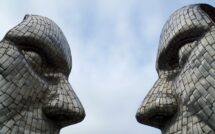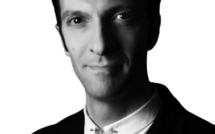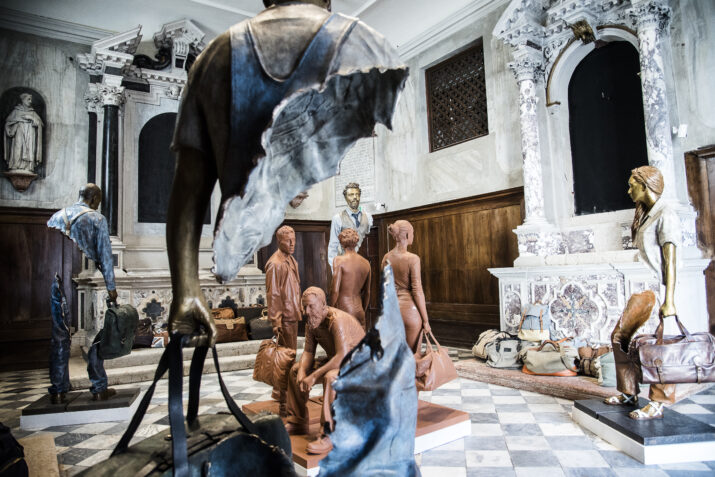
This is part of our special feature, The Politics of Postmigration.
In this exhibit, artists Bruno Catalano, Ljiljana Maletin Vojvodić, and Dragan Vojvodić address the themes of mobility, belonging, and home. While Catalano engages in a quest to reveal the humanity of each of the traveling subjects he transforms into partly hollowed out monumental bronze sculptures, Maletin Vojvodić and Vojvodić directly question the notion of home for people who have come from elsewhere, close or far. Whether migrants, refugees, descendants of migrants, or simply people from another place, the characters who come through in these installations expose their voids, fears, uncertainties, and hopes. To Catalano’s predilection for the permanency and heaviness of bronze, Maletin Vojvodić and Vojvodić answer with the transience and lightness of cardboard to express a longing for security, pause, memory, conviviality, family, friends, and self-realization. All three artists are interested in the ways in which people, their emotions, and their fragilities are inscribed in the urban landscape and how they at the same time exist and disappear there, making them visible, with all their imperfections, doubts, melancholy, and nostalgia. Ultimately, everyone is looking for a place to be and be seen.
—Hélène Ducros for EuropeNow
Les Voyageurs by Bruno Catalano
In his series of sculptures, Bruno Catalano draws from his personal experience of mobility and his family history of migration from Sicily to Morocco, then to France. His massive bronze figures acquire lightness from their missing parts, as if the characters he molds were floating, suspended in time and in space through void and hollowness. This constant dialogue between presence and absence engages viewers’ imagination, connecting people to what came before and what is yet to come. The way in which the sculptures are inserted in the urban landscape leads us to question the notion of belonging and living together, wherever people come from and wherever people are going. The bronze characters blend in the everyday, nonetheless retaining a sense of singularity and perhaps also of loneliness. The “holes” in the characters’ bodies, while rendering them timeless and ethereal also grant them a palpable incompleteness that triggers a sense of melancholy and longing. Viewers are led to rethink how they decipher and interpret passersby in their urban surroundings. Who is everyone? Catalano’s work invites us to connect with one another, as we are all travelers, no matter the point of origin or the destination. His trademark technique—the result of a melting accident—allows him to create tears in the bronze; this material separation, while very concrete, may also evoke a separation from an elsewhere that is unique to each person, yet common to all humans. Through the absence of matter, Catalano universalizes the unique and shares with onlookers the humanity of his subjects. This constant oscillation between concrete matter and fragility acts as a metaphor for mobility and grants ordinary people universal value and meaning.
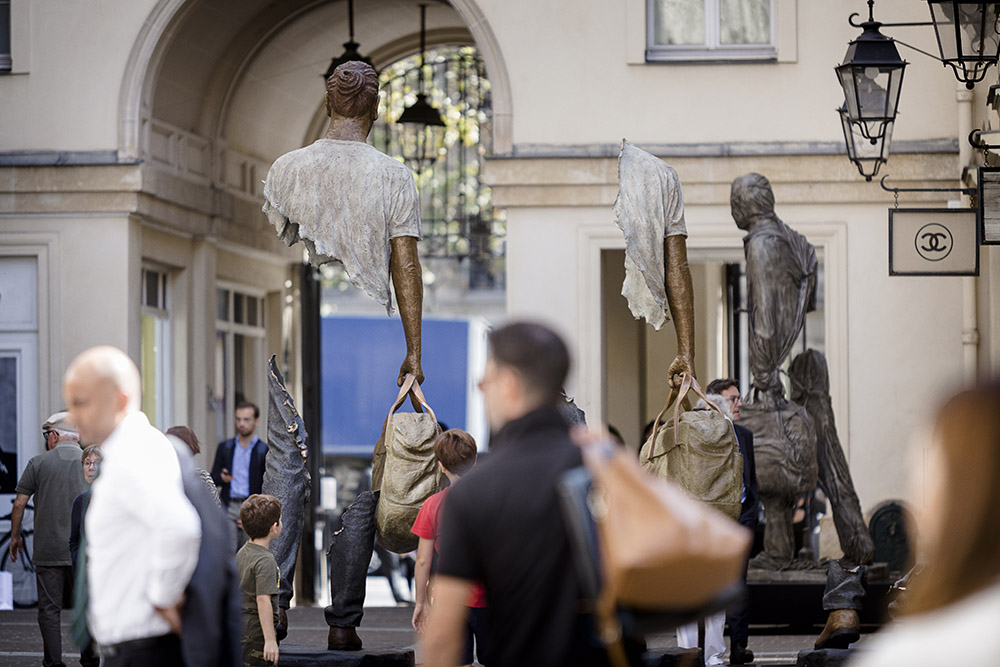
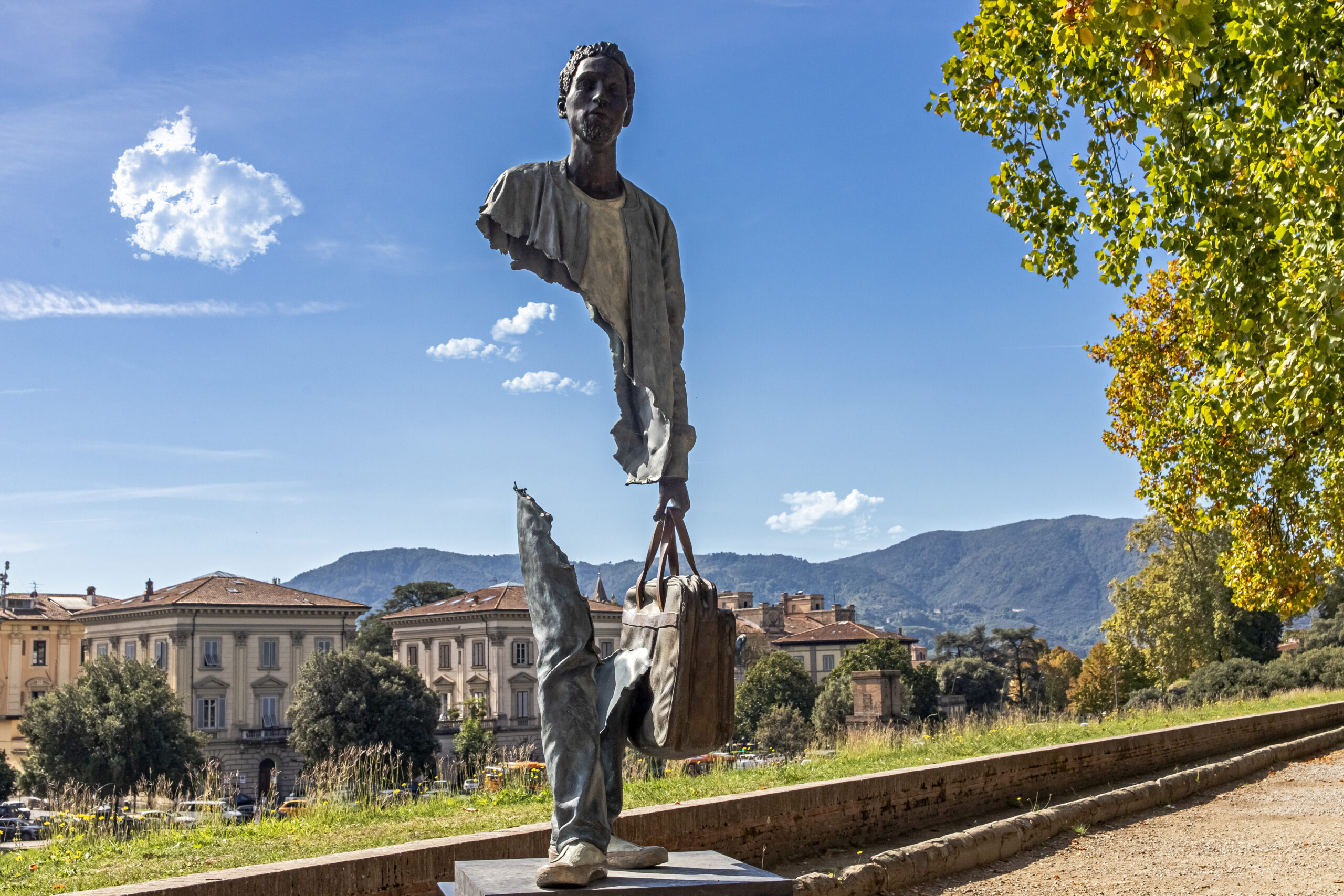
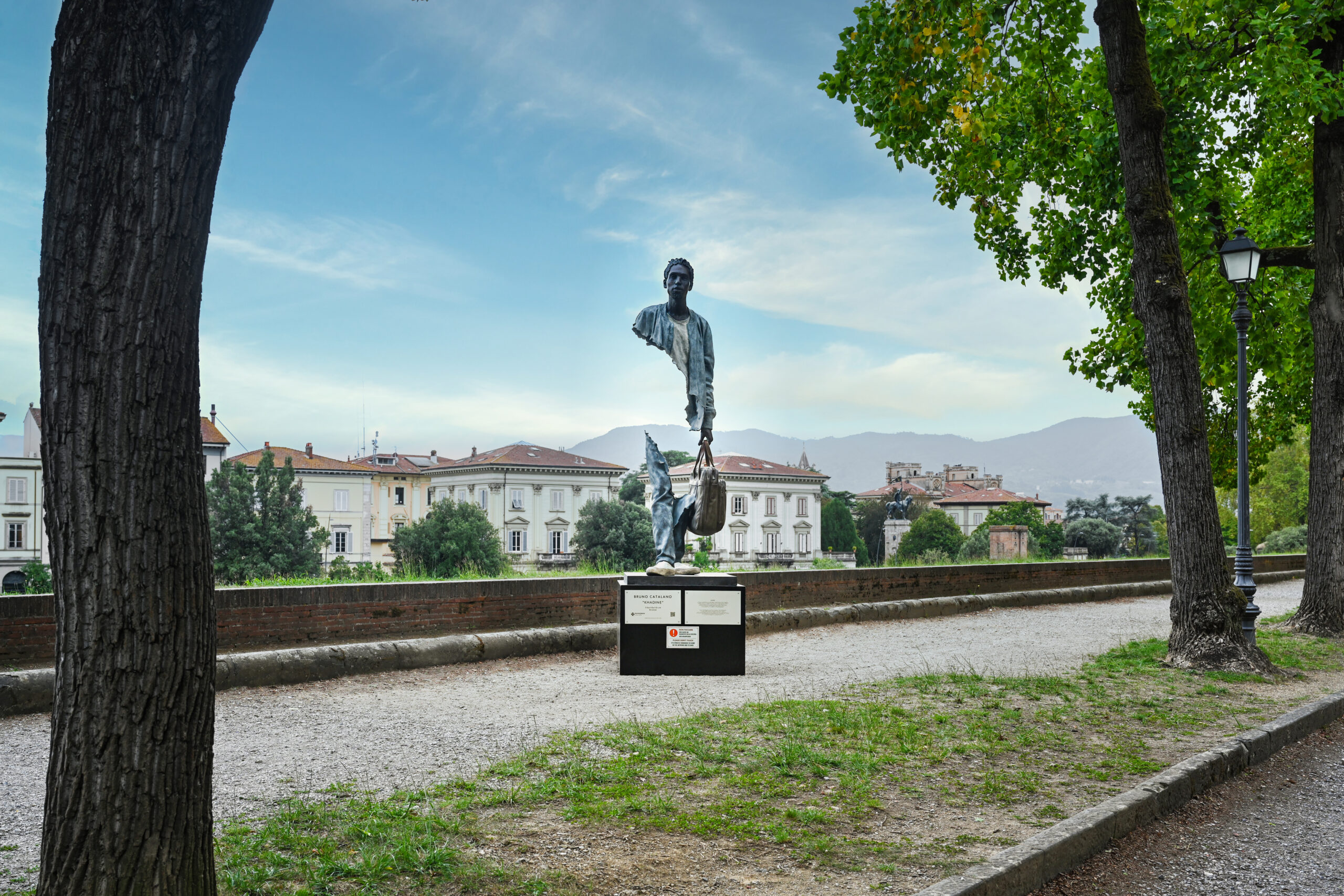
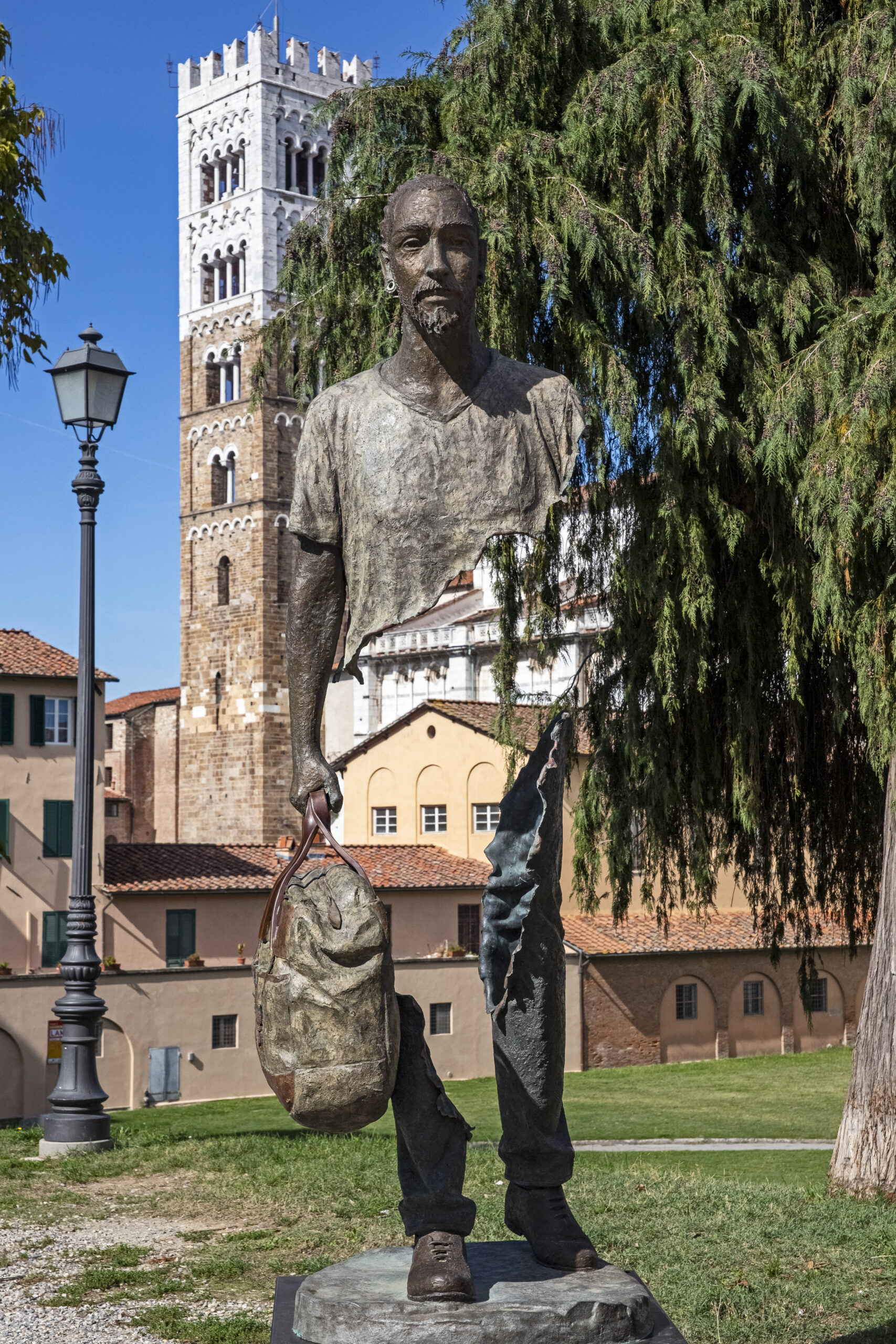
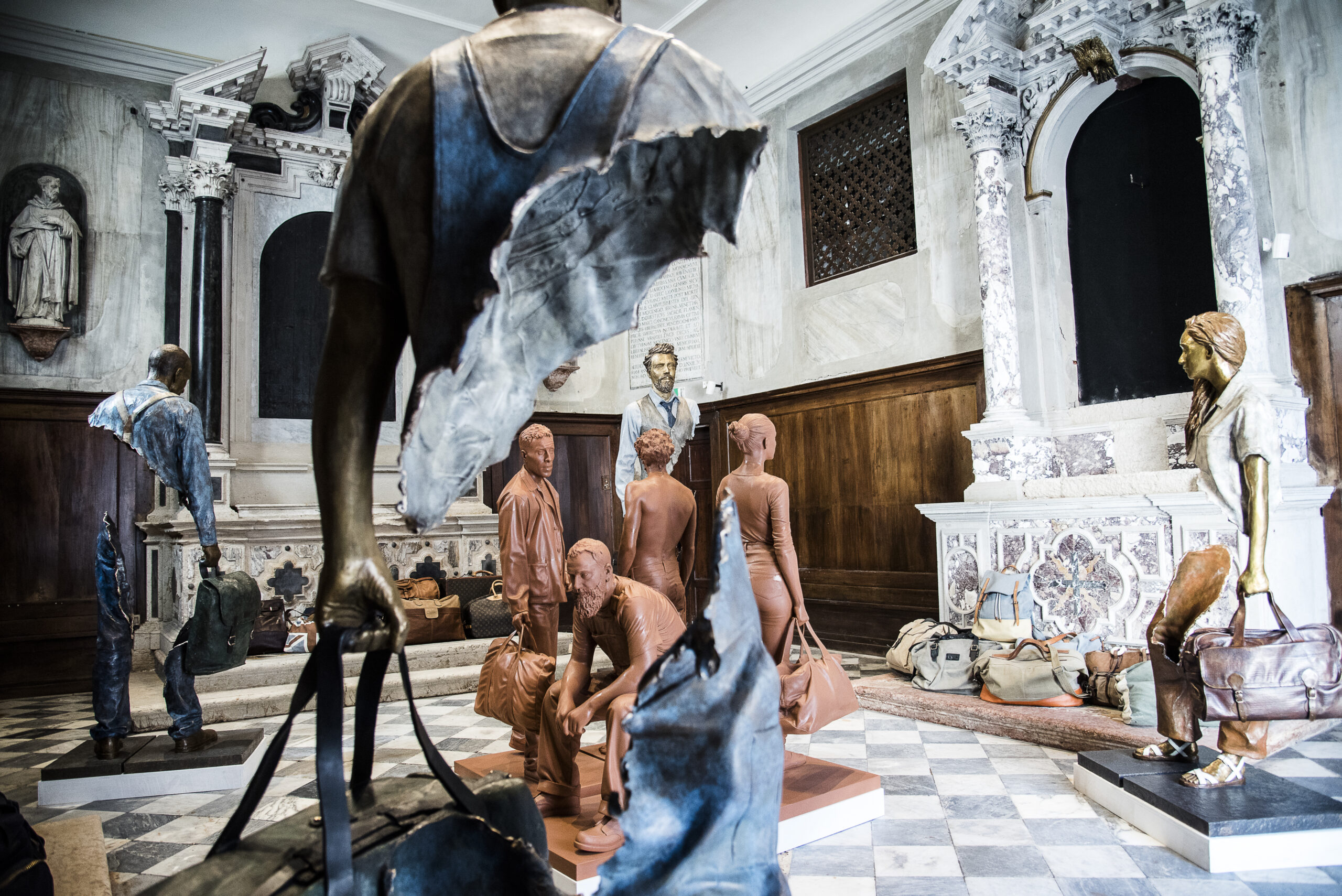
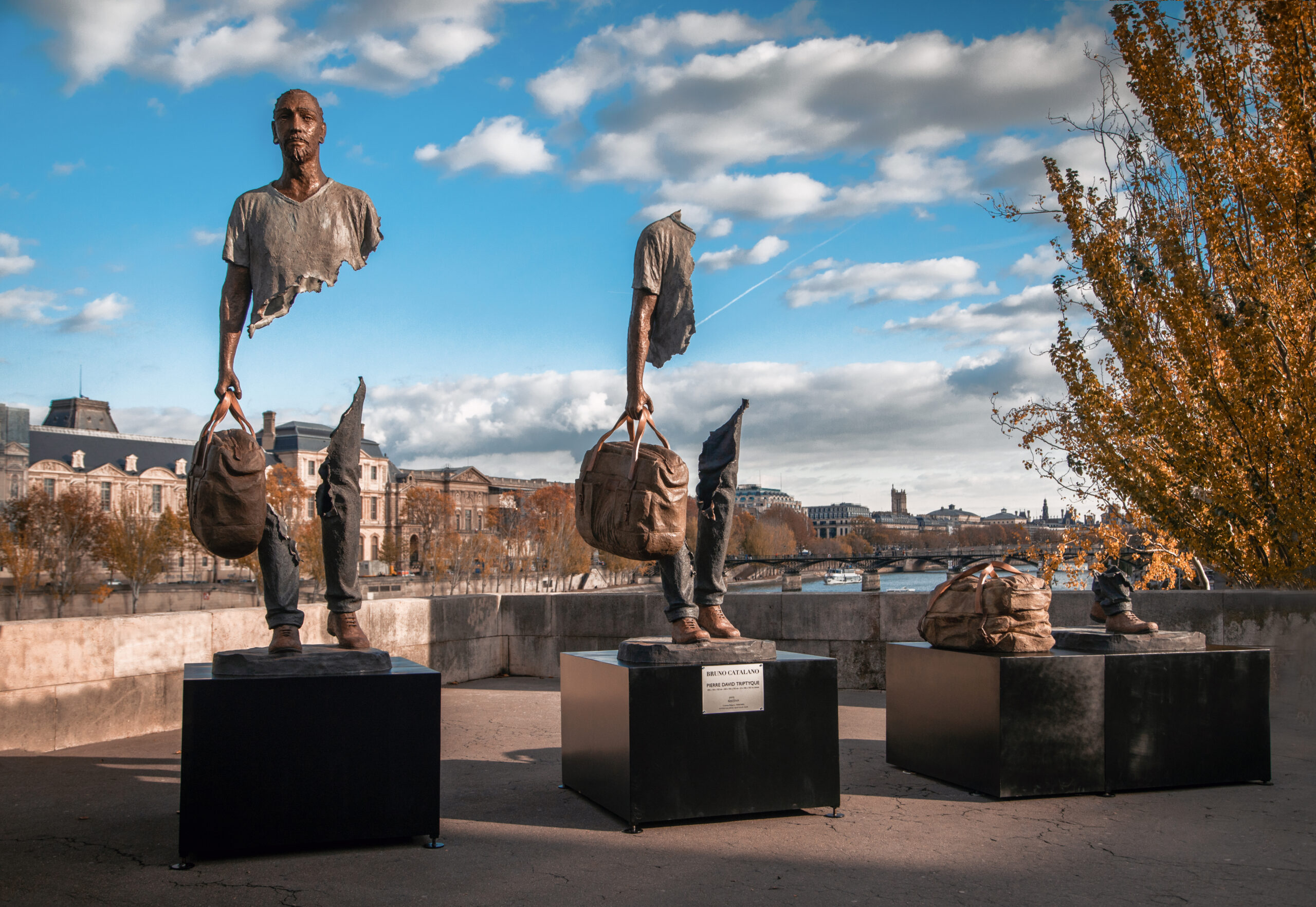
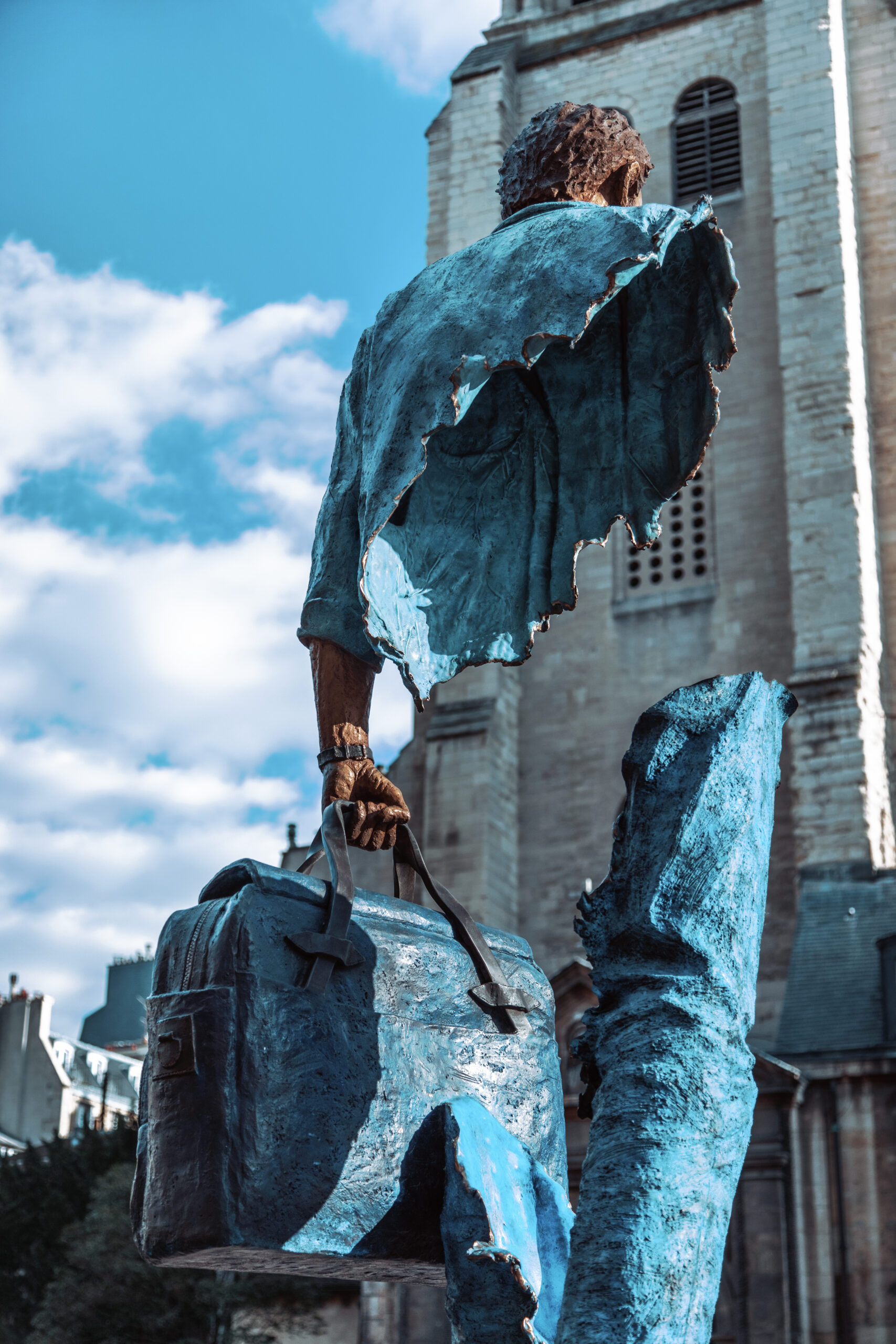
Farsickness/Homesickness/Homelessness (#Meaning of Home) by Ljiljana Maletin Vojvodić and Dragan Vojvodić
The exhibit “Farsickness/Homesickness/Homelessness (#Meaning of Home)” is a conceptual, collaborative, cooperative art-related research, and artist-in-residence project (2016–2022). It represents a long-term, interdisciplinary, collaborative project based on research, surveys, and textual and audio-visual works and performances. It is produced by the creative educational center Art Box, a non-governmental organization from Novi Sad. During their residency, the multimedia artist Dragan Vojvodić and writer Ljiljana Maletin Vojvodić joined efforts to realize the work and research projects in cooperation with artists and local officers involved in the European Capitals of Culture (Plzeň 2015 and Tartu 2024), international residency centers (Typa Museum, Konstepidemin, Nelimarkka Museum, and Gunnarshús), associations of artists, or non-governmental organization in Finland, Estonia, Czech Republic, Sweden, Japan (EU Japan Fest) and Iceland.
They asked themselves, “What does ‘home’ mean to us? When do we truly feel ‘at home’? Has the experience of home lost its ethnic specificity in the context of globalization? Have social networks become our home? How does society see migrants and homeless people, men, and women? Can art make us more socially responsible and sensitize our relationship with the marginalized, the Other, and the different? How about the people who lost their homes? Is anyone thinking about them? Do we feel empathy? Can we help them, and do we want to help them? Is it our individual or collective responsibility/guilt?”
They also asked others, “What does ‘home’ mean to you?” More than 200 survey participants from, among other places, Tokyo, Plzeň, Tartu, and Reykjavík responded:
Home is the place I always return to.
Home is the dog that has never let me down.
My home is where my nostalgia is.
When I see the sea, I know I’m home.
My cup of coffee.
My bed.
My PC.
“Home” isn’t just a place.
A place I would like to forget.
The landscape.
The fear of my father.
A room of my own.
It depends.
Relationship.
A backpack.
A bicycle.
Something temporary.
Childhood memories.
A roof.
A nest.
Birthplace.
Enough space for my books.
My cat.
A reference point.
Friend.
A home is a place where I am not stressed.
I still haven’t figured it out.
Just a place.
Days with good people.
For me, home is where my mum is.
Where you don’t feel lonely.
For me, home is the house I live in.
Where my kids are.
Personal space.
Homeland.
Something I have never had.
Dream.
Comfortable bed.
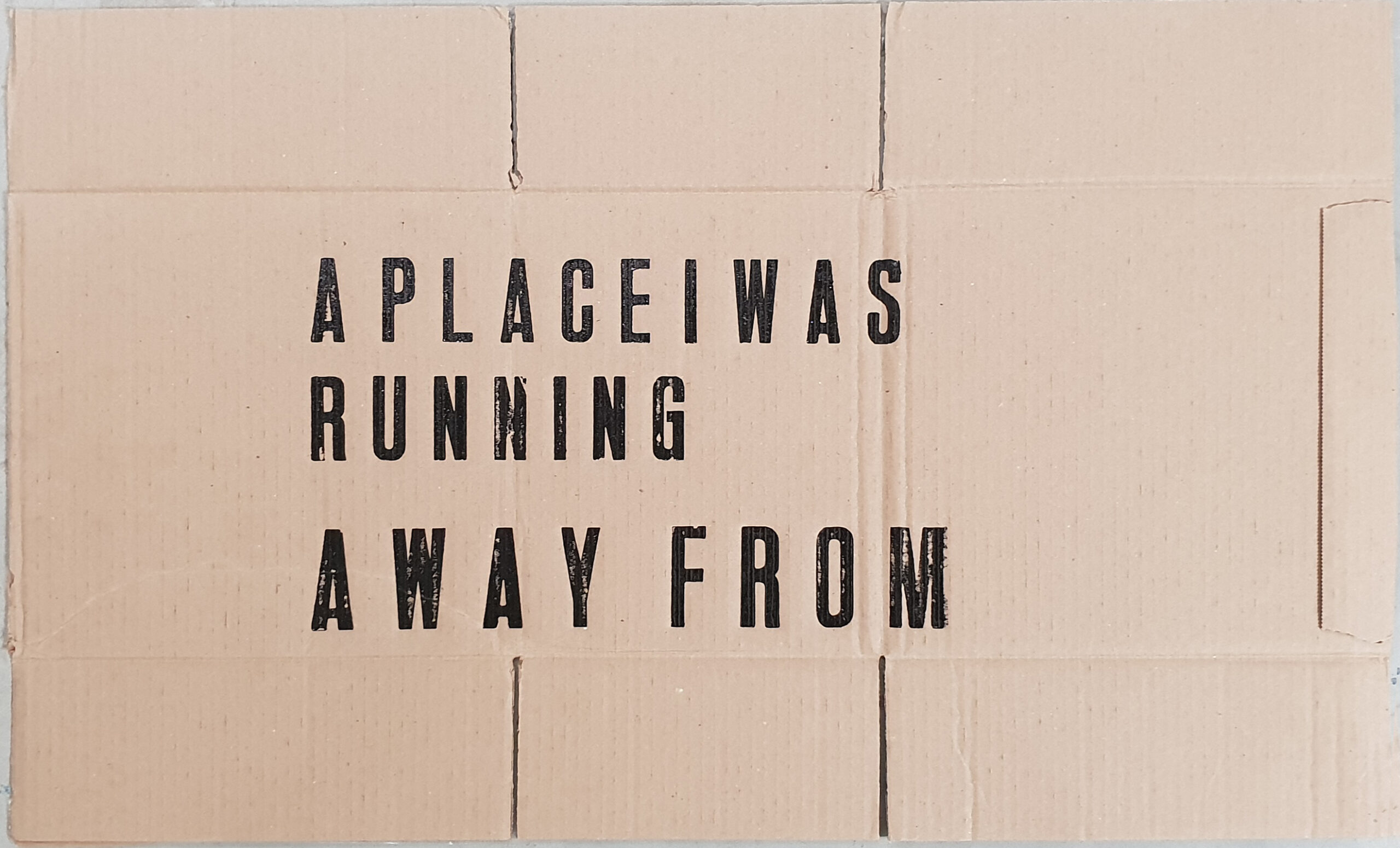
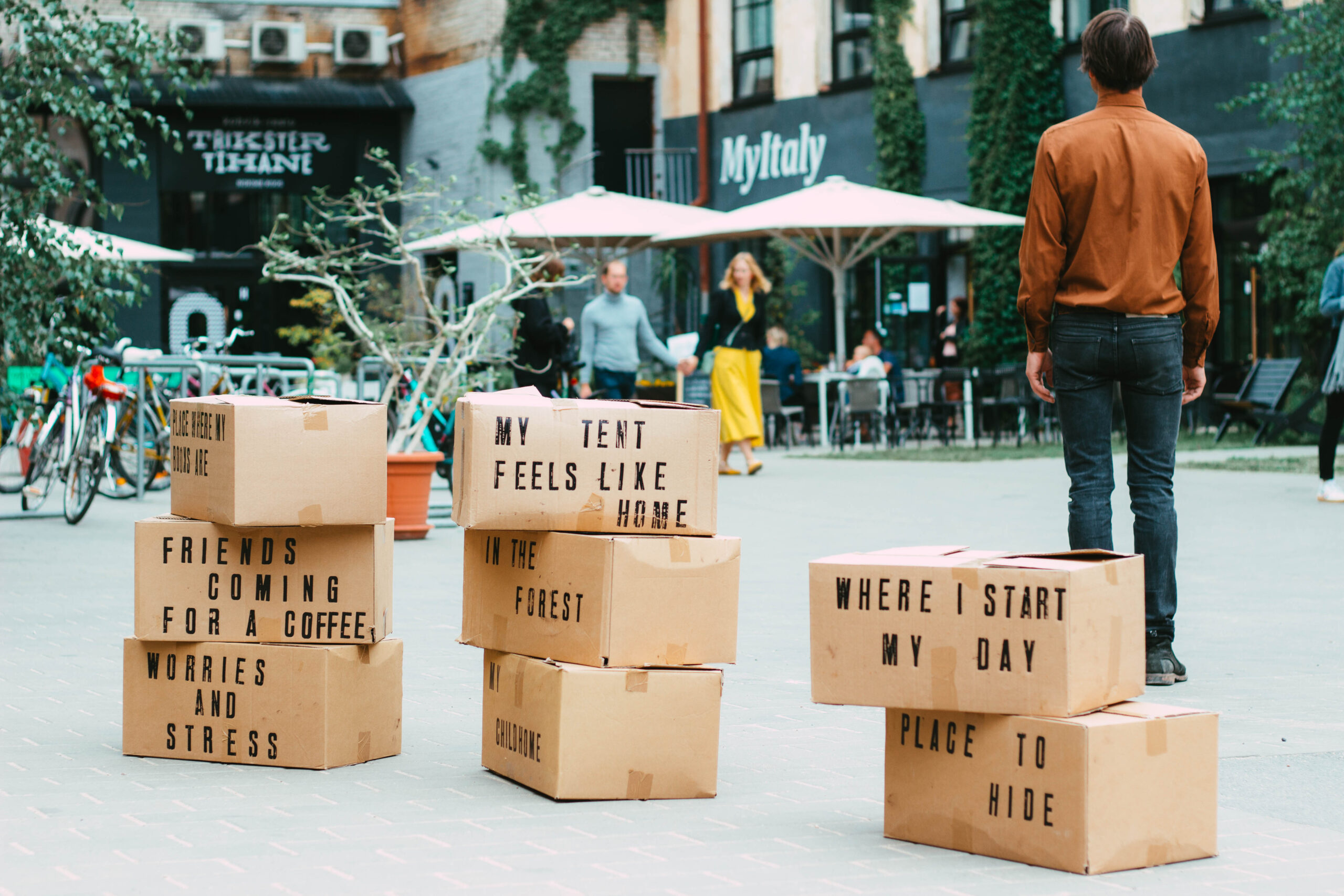
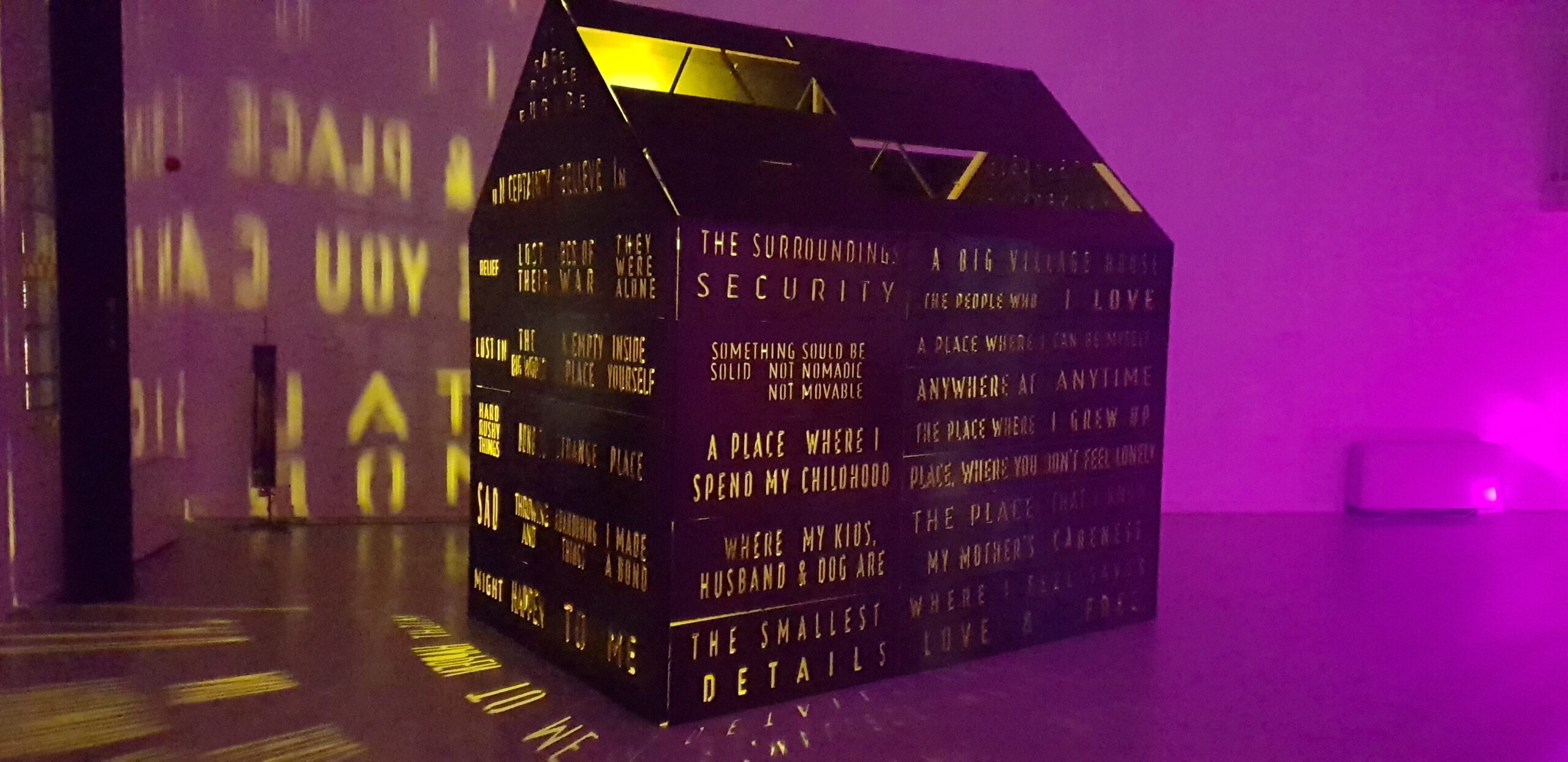
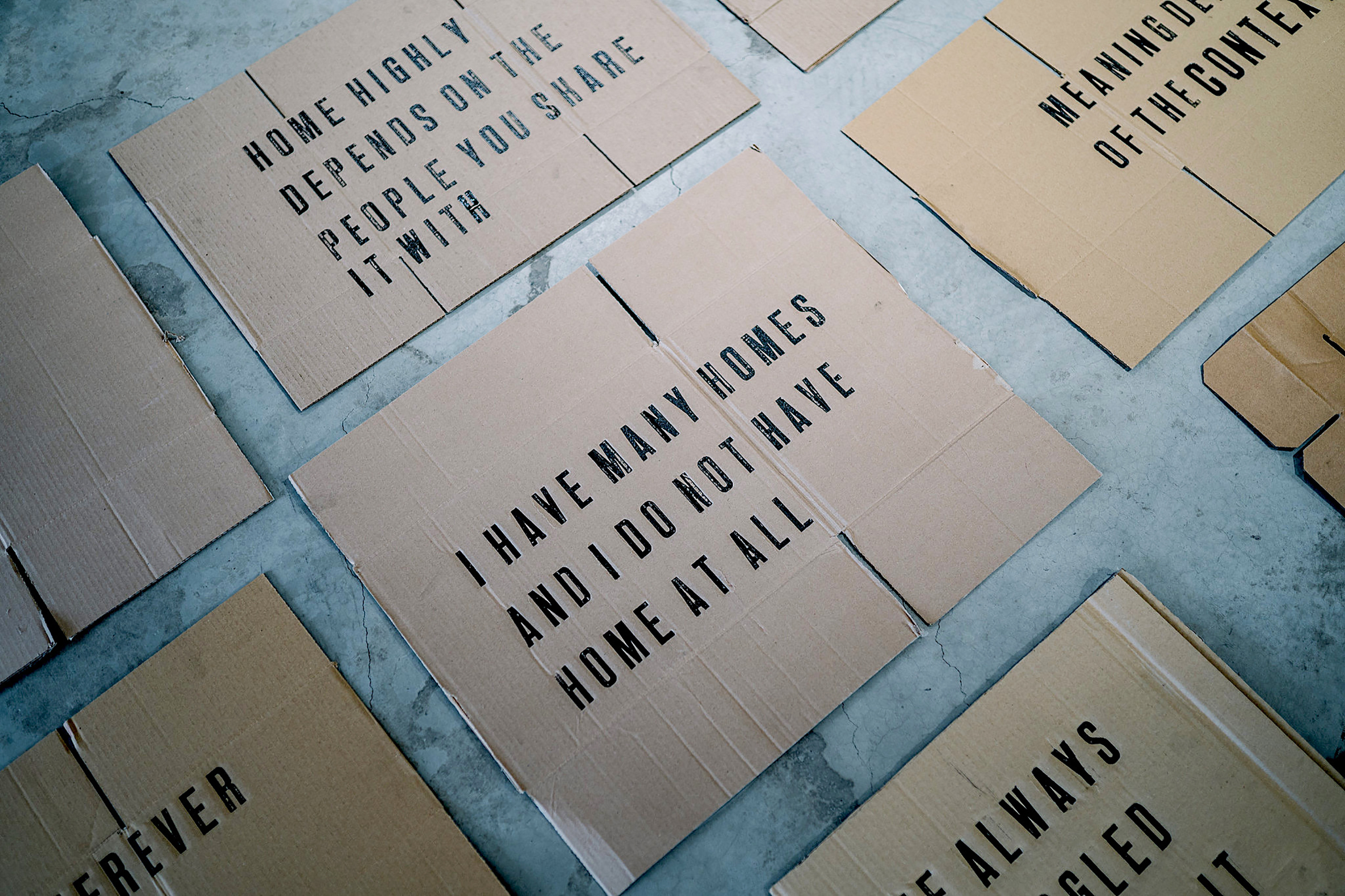
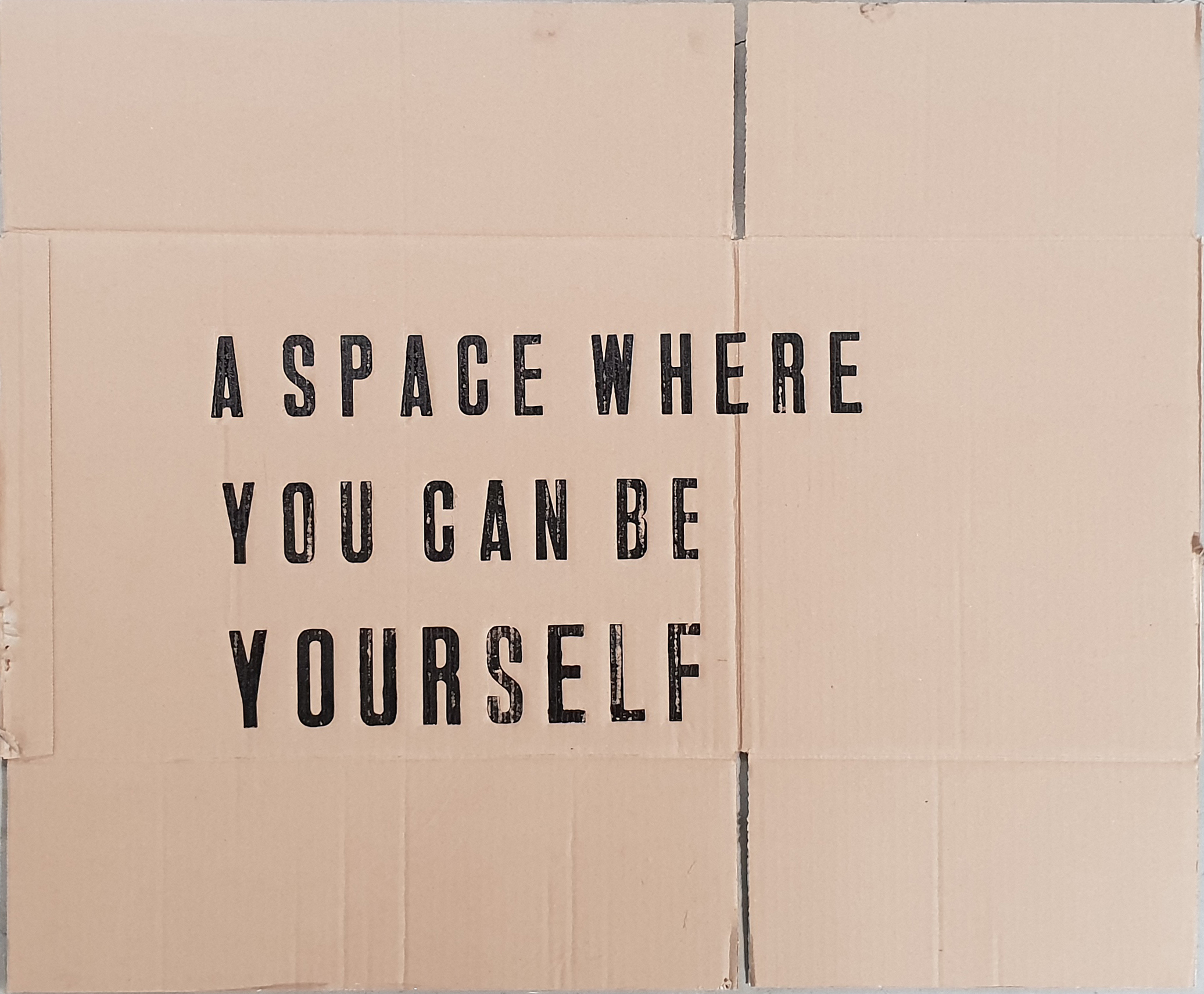
FARSICKNESS / HOMESICKNESS / HOMELESSNESS (#MEANING OF HOME). Images with permission of artists. Copyright @ Ljiljana Maletin Vojvodić and Dragan Vojvodić.
Bruno Catalano is a French sculptor born in Morocco in a family of Franco-Italian descent with a history of mobility. His life experience and travels brought him to sculpture. In his representation of travelers, he seeks to capture the singular baggage that his models carry with them. “The Travelers” (Les Voyageurs) series has become emblematic of his work since 1995. For him, it has represented the resolution of his family’s journey and the beginning of an artistic adventure. In his monumental figures, he sees an opportunity to reach into an intimate humanity. As a sculptor, he continues to be drawn to physical matter as much as to the impalpable matter that shapes human existence. Catalano lives and works in the Drôme region in France. His work is present in public spaces in various cities in Europe and has been shown in numerous exhibitions in museums and galleries.
Ljiljana Maletin Vojvodić holds a Magistra der Philosophie and graduated from the Department of Literature in Novi Sad, Serbia. She is the author of novels, image studies, anthologies, and artist’s books. She has participated in artist-in-residency projects in Iceland, Greenland, Norway, Finland, Sweden, Austria, Spain, Portugal, Russia, Estonia, and Latvia, as well as in research projects in Tokyo, New York, Paris, and Pristina. Ljiljana received the “Andra Gavrilović,” “Milutin Uskoković,” and “Ulaznica” literary awards, as well as a scholarship for writers from the Western Balkans (Austrian Ministry of Foreign Affairs), among other awards. She is an awarded photographer and participated in exhibitions in Serbia, Sweden, and more. She is a member of the Serbian Literary Society, editor-in-chief of the Art Box portal, and co-founder and coordinator of the AiR Art Box.
Dragan Vojvodić is a multimedia artist who graduated from the Academy of Arts in Novi Sad, Serbia. In his artistic practice, he uses media such as performance, art action, installation, photography, video, space intervention, in situ, or object. He has received numerous research grants and participated in an array of residency projects in Iceland, Norway, the US, France, Finland, Croatia, and Russia. Representing Serbia, he has participated in a great number of exhibitions and international festivals in Japan, Iceland, France, Germany, Austria, Hungary, the Czech Republic, Romania, Slovenia, Croatia, Bosnia and Herzegovina, Montenegro, North Macedonia, Italy, Norway, and more. Among other places, his works are part of the collections of the Museum of Contemporary Art of Vojvodina, (Serbia), Pierre Courtin Collection, Sarajevo (BiH), Regional Art Museum of Southern Ostrobothnia, Erró Nelimarkka (Finland), 700 IS Video Art Festival (Iceland), Gallery of Matica srpska, Novi Sad (Serbia), Terra, Kikinda, (Serbia), Foundation Obras (Portugal), DEPO 2015, Pilsen (CZ), Contemporary Gallery, Zrenjanin (Serbia).
Hélène B. Ducros, JD, PhD (University of North Carolina-Chapel Hill), is a human geographer whose research has focused on placemaking through heritage-making, landscapes of remembrance and commemoration, and the circulation of cultural models of heritage preservation.
All images with permission of artists.
Published on May 1, 2023.

